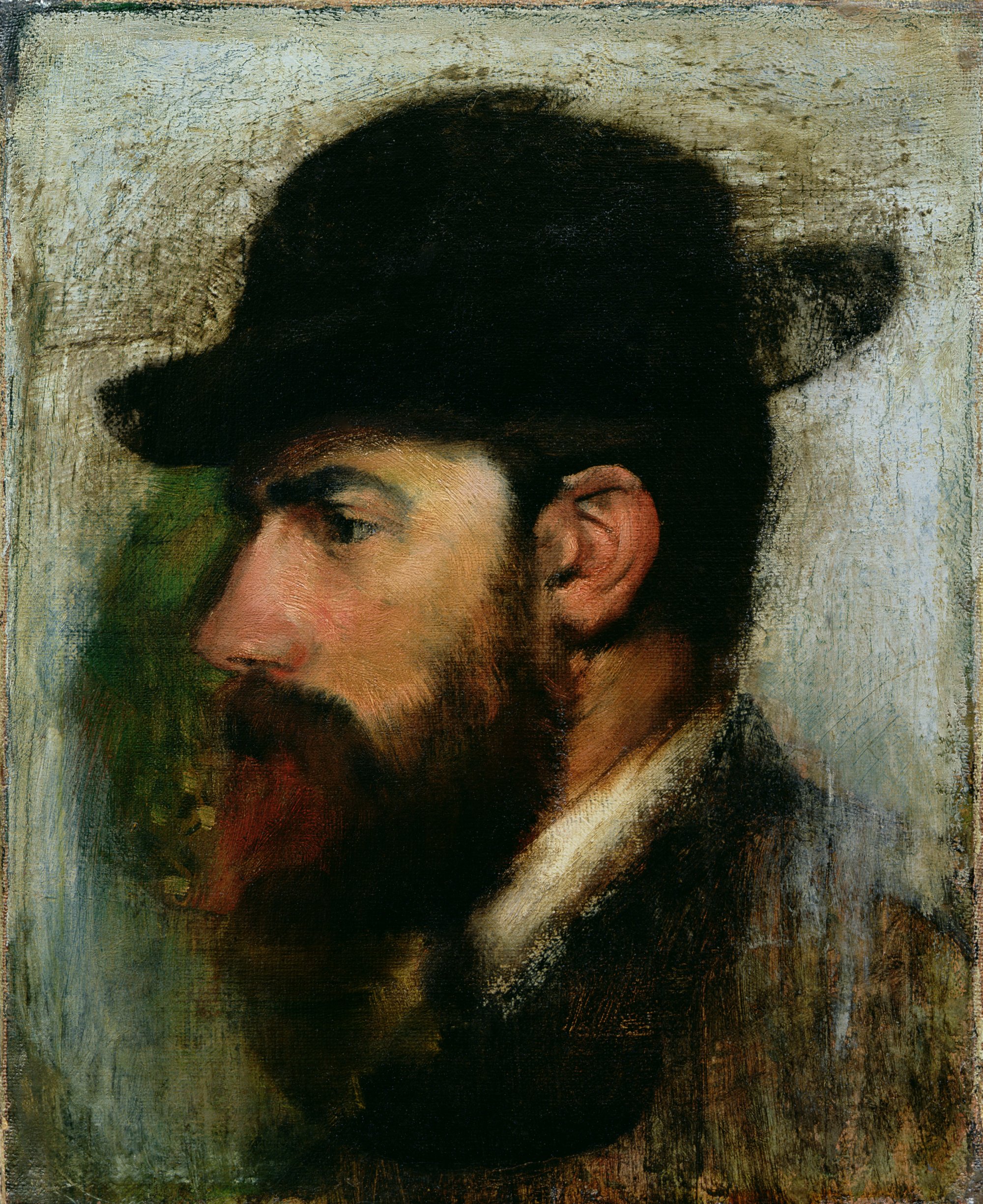Henri Rouart was one of Edgar Degas’ oldest and most loyal friends. They went to same school in Paris, Lycée Louis-le-Grand, and served in the artillery together during the Franco-Prussian War (Degas was an indifferent soldier). Rouart became an engineer and industrial designer, specialising in vapour-compressed refrigeration. He owned a successful company and used his wealth to collect historic and contemporary art, including a few of his friend’s paintings. He was himself a part-time impressionist and exhibited many of his paintings, in both the Salon and the Salon des Refusés, in the 1870s and 1880s.
Degas lived alone, and the Rouarts acted as his surrogate family for decades. He would call on their home at least once a week, and the two kept up a frequent correspondence when Rouart was on his many foreign travels. Degas said Rouart’s was the only family he had. When Henri died in 1912 he was distraught.
Paul Valéry described the scene at dinner in the Rouart house:
At dinner every Friday, at M. Rouart’s, Degas would be the soul of the evening: a constant, brilliant, unbearable guest, spreading wit, terror and gaiety. A piercing mimic, with an endless fund of whims, maxims, banter, anecdotes, brilliantly unfair in his attacks, infallible in his taste, narrow-mindedly yet lucidly passionate, he was always throwing mud at writers, at the Institut, at the aloof poseurs, and the artists who were bent on getting there …
Degas painted several portraits of Henri Rouart, alone and with members of his family (he and his wife Hélène had six children) at various times in his life.
One of the first, an oil sketch now in the Musée Marmottan, was painted in 1871, when Rouart was 38 years old. His face is in left profile. He wears a full moustache and beard, and a brimmed, round-topped hat. It’s an informal work in its technique, but Rouart, only part of his face not obscured by his hat and facial hair, has a wholly serious air. (Another more relaxed painting of about the same time shows Rouart and his daughter Hélène sitting on his knee.)
Degas keeps the left profile view and the grave expression for another painting, now in the Carnegie Museum of Art in Pittsburgh, which he painted four or five years later, probably in 1875. This time, though, Rouart – now equipped with the top hat and frock coat of the successful industrialist – is placed in a setting, that of the refrigeration machinery factory he owns. His figure is loaded with additional social significance. The white walls, orange roof and tall chimney of the company building stretch out behind him, with woods and sky behind, and he shares the foreground with a set of railway lines that converge on the building. At first sight, then, a respectable and substantial capitalist, surrounded by the fruits of his labours.
Yet there’s something quietly unsettling about the picture. Apart from the chimney, all the lines, including the direction of Rouart’s gaze, are slightly out of the horizontal and vertical. This makes for a more satisfying composition, but it also hints at instability, something not quite solid. Also, Rouart’s expression is far from a self-satisfied or overconfident. There’s a touch of sadness in his face that suggests he may be aware of the fragility and transience of his achievements.
In a third picture, now in Neue Pinakothek, Munich, the year is 1895 and Henri Rouart has reached (premature?) old age. He’s resting in a chair to the right. The main space is occupied by a standing figure, that of his son Alexis. Henri’s face is still strong, even fierce, in comparison with that of his son, but age and rheumatism have reduced his body to a shadow of his former grandeur. His beard is white and reduced, his hair untidy, and a small box-like hat sits at the back of his head. His white hands rest inert on a stick; by contrast Alexis is preparing to put on his gloves.
Degas uses a very different oil technique in this picture. The brushstrokes are rougher and more expressionist, the colours starker. Henri’s left eye is left as a wound-like dark red hole, and the flower on the left is sketched in quickly. The background is a rather jaundiced yellow. The result is an uncompromising picture of disintegration, and of the inevitable transition from one generation to the next.
There were two versions of Edgar Degas. Many people found Degas the social being difficult to deal with: grumpy, pugnacious and bigoted (notoriously he took the wrong side in the Dreyfus affair). Degas the artist, on the other hand, had an unerring gift for combining penetrating observation of the world around him with a sympathetic eye for those who inhabited it. Henry Rouart, as friend and subject, probably brought out the best in him.






Leave a Reply